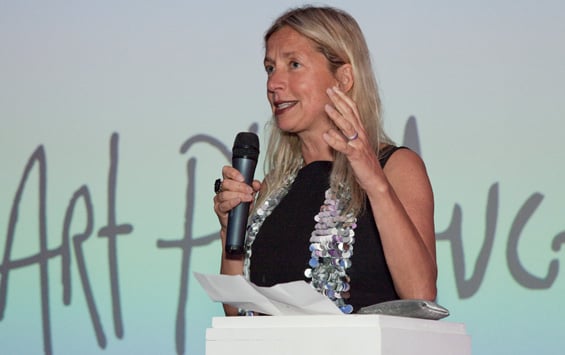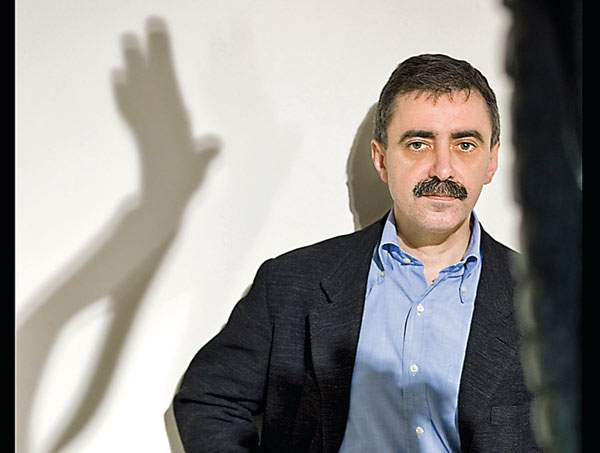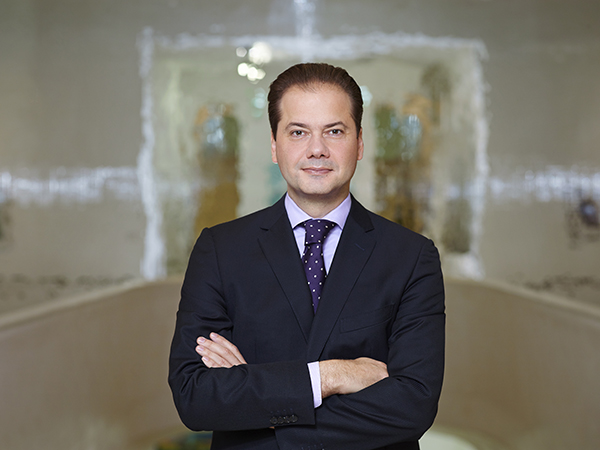Art World
Which Five European Museum Directors Are Doing the Best Job?
Find out what it takes to turn a major institution around.

Find out what it takes to turn a major institution around.

There’s much more to being a good museum director than putting on great shows. In fact, contrary to what the general public may think, institutional directors of any real consequence these days may have relatively little to do with granular-level programming. A good museum director is a stellar fundraiser, willing (especially in Europe) at times to go against convention for the betterment of the institution. He or she knows that good museums require constant innovation but must also resist trends.
As our list shows, this applies regardless of an institution’s size or financial backing. Monolithic museums can often get by on mediocre vision due to their ingrained position within a city or country’s cultural landscape. What counted for this list (names are presented in alphabetical order) is a director’s vision and his or her impact on a given institution and its surrounding urban landscape.

Iwona Blazwick
Photo: Courtesy Whitechapel Gallery
1) Iwona Blazwick, Whitechapel Gallery, London
Iwona Blazwick is such a force in the British art world that, rumor has it, she might one day replace Tate’s capo di tutti, Nicholas Serota. For now, though, she has plenty on her plate at the Whitechapel Gallery, the beloved East London institution she has helmed since 2001. Some directors of institutions are great administrators, others are visionaries. Blazwick is both. She oversaw a £13 million expansion project in 2009, which vastly augmented the exhibition spaces. Visitors followed in droves, increasing 120 percent the following year. A champion of female artists, she instigated, with the luxury brand Max Mara, the biennial Max Mara Prize for Women. Blazwick is particularly skilled at crafting public-private partnerships, curating shows at the Gallery at Windsor, within Florida’s exclusive Windsor community, and coaxing high-profile collectors, including Dimitris Daskalopoulos and Patrizia Sandretto Re Rebaudengo, into showing their collections at her institution. Blazwick is also a critically acclaimed curator, currently working on a large survey of abstract art, “Adventures of the Black Square: Abstract Art and Society 1915–2015,” due to open on January 15, 2015.

Laurent Le Bon
Photo: Pascal Ferro via Wikimedia Commons
2) Laurent Le Bon, Musée Picasso, Paris
The former director of the Pompidou-Metz landed in a nest of snakes when he accepted the post of director of the Musée Picasso earlier this year. His predecessor, Anne Baldessari, was sacked months before the museum was due to reopen after a five-year renovation, which was repeatedly delayed and dramatically over budget. But she was backed by several members of the Picasso family (Claude Picasso even said he would consider anyone taking her place “an impostor”). A few months later, Le Bon seems to have restored some order to the house. The grand reopening of the Musée was a rip-roaring success, clocking over 100,000 visitors in its first month. Even Beyoncé made an appearance (see “Beyoncé Visits Picasso Museum in Paris“).

Manuel Borja-Villel
Photo via: El País
3) Manuel Borja-Villel, Museo Reina Sofia, Madrid
Since Manuel Borja-Villel took up the directorship in 2008, the Museo Reina Sofía hasbecome the most prestigious contemporary contemporary art museum in Spain. Despite the crippling budget cuts that have plagued his mandate, Borja-Villel has consistently delivered an uncompromising exhibition program, exploring both the peripheries of art and politically engaged art practices. He’s also ruffled a few feathers, most recently with his “Really useful knowledge” exhibition, which was accused by Christian associations of promoting “anti-Catholic activities” (see “Angry Christians Demand Resignation of Museo Reina Sofía Director”). His critics might find him too cryptic or too left wing, but in 2013, the director’s contract was renewed until 2018, which will make his tenure a decade long, at least. That’s a rare feat in a museum that has had six different directors in just 20 years.

Max Hollein
Photo: Gaby Gerster, courtesy Städel Museum
4) Max Hollein, Städel Museum, Schirn Kunsthalle, and Liebieghaus Skulpturensammlung, Frankfurt
Even before arriving in Frankfurt in 2001 to take over the direction of the city’s Schirn Kunsthalle, Max Hollein had made a name for himself at the Guggenheim as a key force behind its Berlin and Bilbao outposts. Five years after landing in Frankfurt, he added the Städel Museum and Liebieghaus Skulpturensammlung to his list of responsibilities and began an extensive fundraising and expansion initiative to build out the Städel’s collection of contemporary art. He stands as one of the few German museum directors who has been able to rouse private sector support for public museums on a large scale (including innovative projects like a collaboration with drugstore DM this year). And, equally important, he has managed to imbue Frankfurt’s citizens with a distinct sense of responsibility for the future of the institutions, which now look on track to compete with the best in Europe and the rest of the world.

Jean-Luc Martinez
Photo: © Musée du Louvre 2013 / Antoine Mongodin
5) Jean-Luc Martinez, Louvre, Paris
The Louvre’s incoming director Jean-Luc Martinez is plotting what he calls a “silent revolution of the palace.” And less than a year into France’s most prestigious museum job, he’s already begun a $67 million makeover. The museum’s signature I.M Pei–designed pyramid is to be completely refurbished, whole galleries rehung, two new entrances added, and all of the 38,000 wall labels updated. The originality of Martinez’s approach is that, unlike his predecessor, Henri Loyrette, who oversaw the Louvre Abu Dhabi’s €1 billion deal, the new director isn’t looking abroad. His primary mission is to refocus on the core of the institution: its collections and permanent displays. He’ll even reduce the number of temporary exhibitions to allow for the creation of a new educational space. Martinez’s objective is to make the museum “more open, easier to understand and to access.” It might be less sexy than another exotic outpost, but such ground work is urgently needed. By 2025, the Louvre could welcome up to 12 million visitors a year.